News Articles
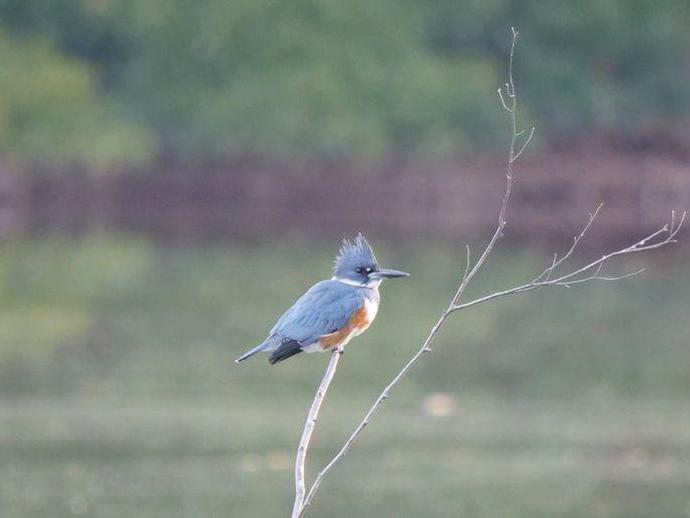
Ben here with today's #BenInNature update presented by our friends at Carter Bank & Trust!
November 30, 2021
Ben here with today's #BenInNature update presented by our friends at Carter Bank & Trust! While visiting South Carolina over the weekend, I spent some time around a lake in Aiken and photographed a number of cool birds! My favorite find of the weekend was this little fellow: a very photogenic belted kingfisher (Megaceryle alcyon). Belted kingfishers can be found year-round throughout most of the U.S., and through much of their range, they're the only species of kingfisher you're liable to find. Just like this one, they're most often seen perched on trees, posts, and other watchpoints near bodies of water, constantly on the lookout for tasty fish swimming by. Once they spot one, they'll dive into the water after it! You ...

#GivingTuesday is an opportunity for people around the world to come together through generosity ...
November 29, 2021
#GivingTuesday is an opportunity for people around the world to come together through generosity in all its forms by sharing acts of kindness and giving their voice, time, money, goods, and advocacy to support communities and causes. Today, we ask that you consider supporting the museum's Discovery Fund. From providing support for new exhibits to making possible the next great scientific discoveries, your 2021 VMNH Discovery Fund contribution will help expand education outreach and groundbreaking scientific research throughout the Commonwealth and beyond. Your tax-deductible Discovery Fund contribution supports... EXHIBITS... From the recently opened Lepidoptera exhibit to the Science of Flight exhibit opening ...
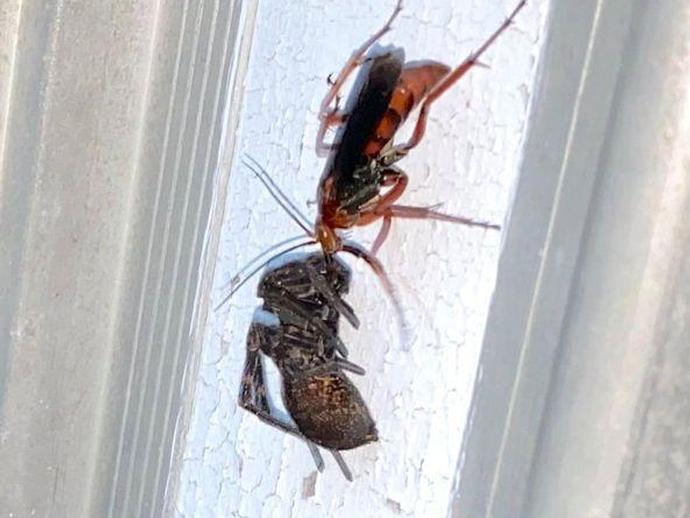
Ben is taking a well-deserved day off today ...
November 29, 2021
Ben is taking a well-deserved day off today, so we're reaching into the archives for today's #BenInNature update presented by our friends at Carter Bank & Trust! The following post was originally published on September 17, 2020. A lot of folks seem to hate wasps, but what about a wasp that hunts spiders? This is Tachypompilus ferrugineus, also known as the rusty spider wasp or red-tailed spider hunter! These large wasps have a wide range, stretching from Canada all the way down to South America! These wasps are solitary, meaning that they don't live in large communal nests, but instead dig small, simple nests in dry soil. The adults eat nectar from a wide variety of flowers. Their larvae, however, are not vegetarians ...
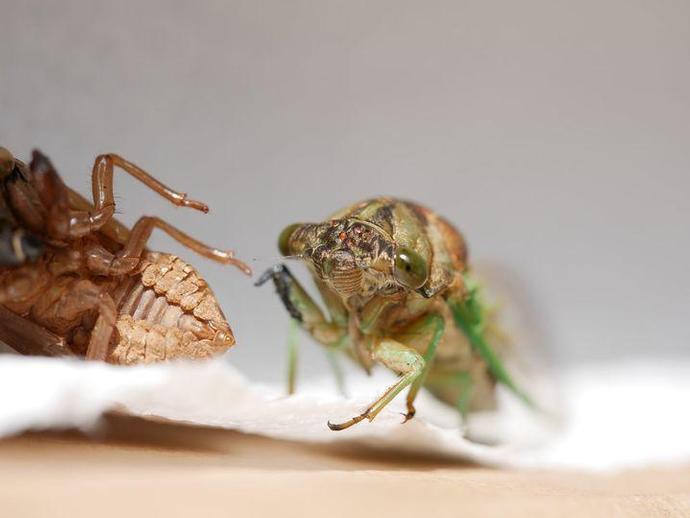
We're reaching into the archives for today's #BenInNature update presented by our friends at ...
November 28, 2021
We're reaching into the archives for today's #BenInNature update presented by our friends at Carter Bank & Trust! The following post was originally published on September 4, 2020. While the periodical cicadas that emerged early in the summer are long gone, we still have a little bit longer to enjoy Virginia's annual cicadas! This one belongs to the genus "Neotibicen," and these cicadas are also colloquially known as harvestflies or jarflies. I found this particular one right after it had emerged on a rainy morning last weekend. It looked like it was having some trouble navigating the puddles, so I did what anyone would do: I brought it inside my house, pinned a paper towel to the inside of a cardboard box so it could have ...
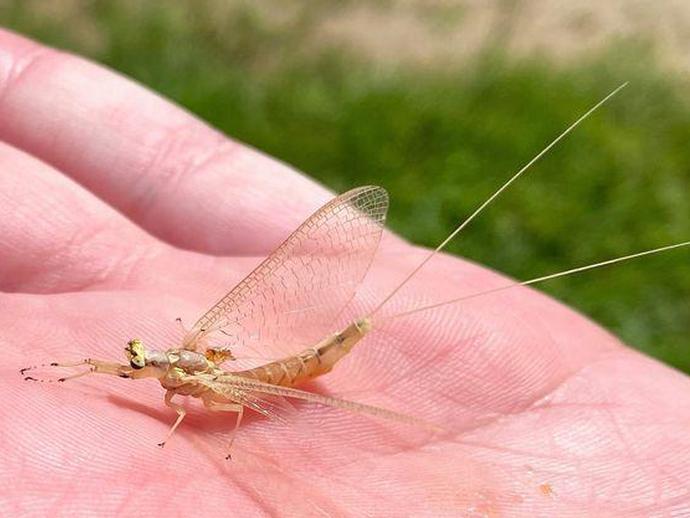
We're reaching into the archives for today's #BenInNature update presented by our friends at ...
November 27, 2021
We're reaching into the archives for today's #BenInNature update presented by our friends at Carter Bank & Trust! The following post was originally published on September 3, 2020. This mayfly belongs to the genus Hexagenia, also known as the burrower mayflies. They get their common name because while they're in the aquatic nymph stage, they dig little U-shaped tunnels. They hide in the tunnels and wiggle their bodies, which draws water through the tunnel -- and along with it, all kinds of microscopic organisms that they can eat! Mayflies are truly fascinating insects. Like dragonflies and damselflies, they belong to the ancient division of insects known as Palaeoptera, and they have a number of traits that were likely ...
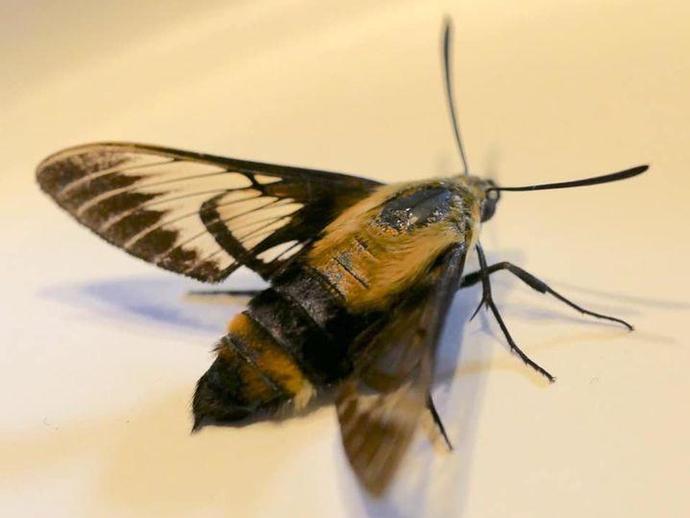
Ben is taking a well-deserved vacation the rest of this week ...
November 26, 2021
Ben is taking a well-deserved vacation the rest of this week, so we're reaching into the archives for today's #BenInNature update presented by our friends at Carter Bank & Trust! The following post (slightly edited) was originally published on September 2, 2020. Have you ever been in your garden and seen something that looks like a small, unusual hummingbird flitting from flower to flower? There's a good chance you spotted a hummingbird moth! This particular hummingbird moth is a snowberry clearwing (Hemaris diffinis). Depending on your region, these are also called "flying lobsters" due to the unusual fan-shape at the end of the abdomen. They can be found in scattered locations throughout much of the U.S. and many parts ...
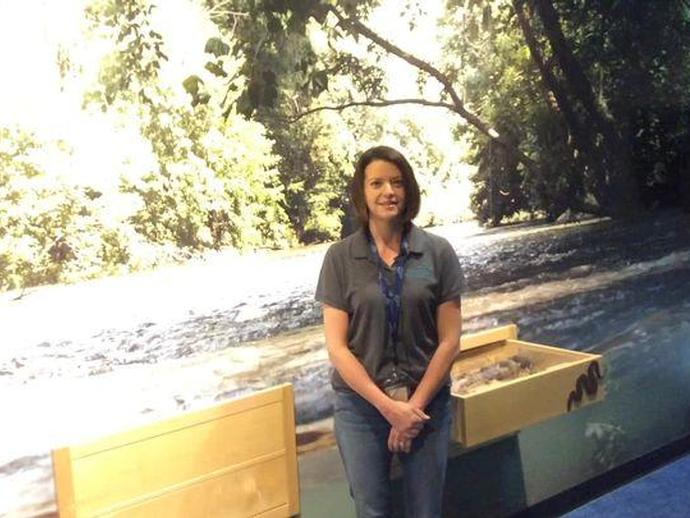
VMNH Education Manager Christy Deatherage is inside the Wild Watersheds exhibit to highlight ...
November 26, 2021
VMNH Education Manager Christy Deatherage is inside the Wild Watersheds exhibit to highlight Virginia's most feared venomous snake - the timber rattlesnake - in this week's episode of "Museum Minute"! ABOUT MUSEUM MINUTE The Virginia Museum of Natural History has a spectacular assortment of displays within its exhibit galleries! Some displays are unforgettable, while others don't always get the attention they deserve. Through the original series "Museum Minute", museum educators highlight various displays throughout the exhibit galleries, while providing intriguing facts you may not have known. "Museum Minute" is made possible thanks to VMNH Corporate Partners Carter Bank & Trust (www.cbtcares.com) and Boxley Materials ...
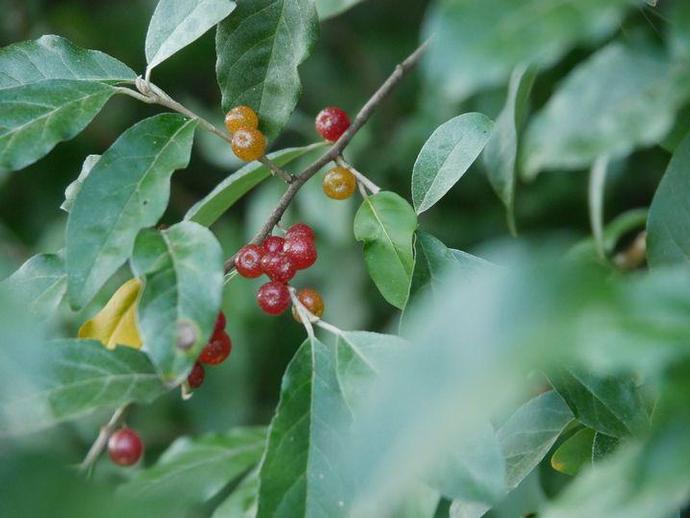
Happy Thanksgiving!
November 25, 2021
Happy Thanksgiving!! Ben is taking a well-deserved vacation the rest of this week, so we're reaching into the archives for today's #BenInNature update presented by our friends at Carter Bank & Trust! The following post was originally published on September 1, 2020. I always try to make these daily posts a celebration of nature, a chance to find something fascinating or beautiful in every creature. Today, however, I'm going to make an exception, because I straight-up hate today's plant! This is autumn olive (Eleagnus umbellata), also known as Japanese silverberry or spreading oleaster. It is indigenous to eastern Asia, but it is an invasive species in the eastern U.S. In the early 1800s, it was purposely introduced ...
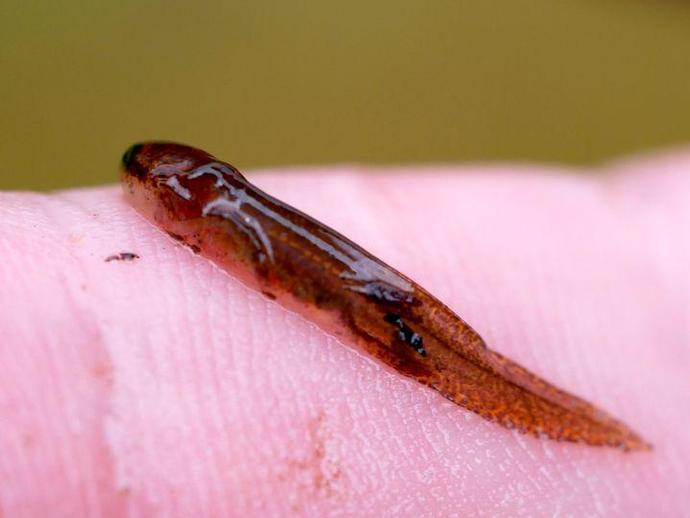
Ben is taking a well-deserved vacation the rest of this week ...
November 24, 2021
Ben is taking a well-deserved vacation the rest of this week, so we're reaching into the archives for today's #BenInNature update presented by our friends at Carter Bank & Trust! The following post was originally published on August 31, 2020. It may not look like much out of the water, but this little fellow is most likely a larval eastern newt (Notophthalmus viridiscens). The eastern newt has quite an interesting life cycle. As larva, they have gills and don't leave the pond where they hatched. After about three months, they shed their gills, turn bright orange, and develop little red spots rimmed with black; during this juvenile stage, they are known as "red efts" and they take to land, traveling far and wide in search ...
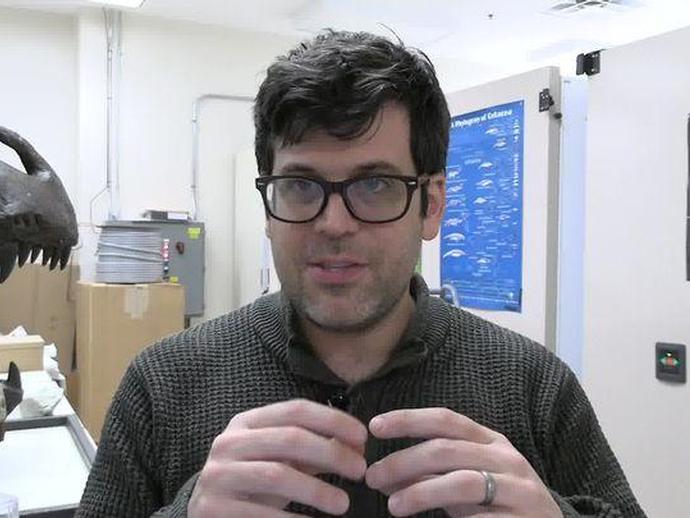
Dr
November 24, 2021
Dr. Adam Pritchard is back in action with a brand new episode of "Tales of Ancient Life"! In this week's episode, Dr. Pritchard highlights the intriguingly named beelzebufo, the devil frog! Special thanks to Carter Bank & Trust (www.cbtcares.com) and Boxley Materials Company (www.boxley.com) for helping make this episode possible! ABOUT TALES OF ANCIENT LIFE Our planet has an incredible story to tell and VMNH Assistant Curator of Paleontology Dr. Adam Pritchard helps share it through his original video series, "Tales of Ancient Life". Dr. Pritchard uses spectacular fossils and other scientific specimens from the museum's paleontology collections to highlight the wonders of earth's ancient past in ways that are both ...
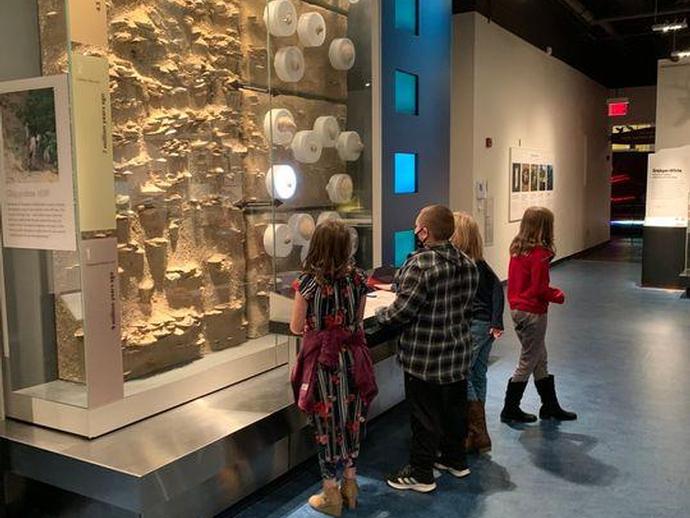
We were thrilled to host dozens of 4th graders from Sheffey Elementary School in Wythe County ...
November 23, 2021
We were thrilled to host dozens of 4th graders from Sheffey Elementary School in Wythe County today at the museum! While at the museum, the students toured our exhibit galleries and took part in the SOL-based "Space Voyage" program led by VMNH Educator Terri Robertson! Interested in having your students visit the museum for exhibit tours and special programming led by VMNH educators? Visit www.vmnh.net/education to learn more about all of the educational opportunities offered here at VMNH, as well as the many opportunities we offer through outreach and virtual programming!
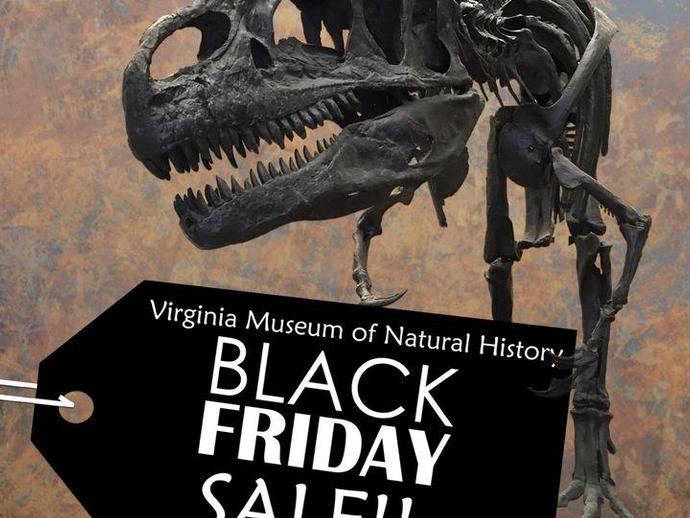
BLACK FRIDAY SALE at the Museum Store!
November 23, 2021
BLACK FRIDAY SALE at the Museum Store!!! Enjoy 10% OFF all Museum Store merchandise on Friday, November 26 from 10am to 4pm!** VMNH Members who present their membership ID during purchase will receive an additional 10% off! The Museum Store features a wide variety of unique clothes, games, toys, and novelty items for children and adults! Museum admission is not required to shop at the Museum Store. **Sale does not apply to consignment items.
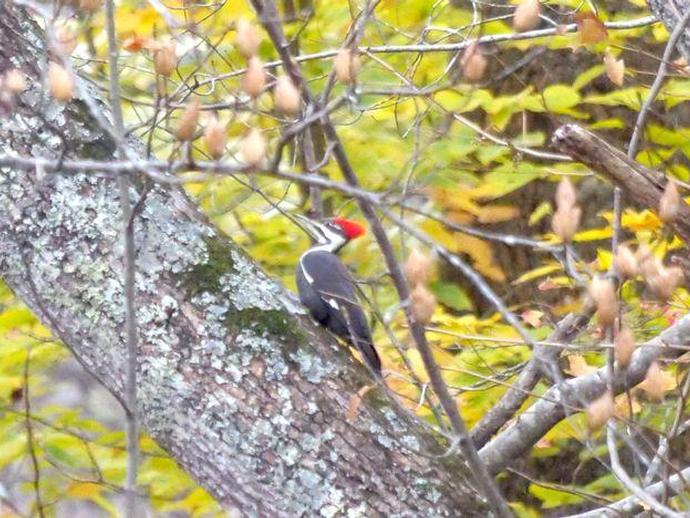
Ben here with today's edition of #BenInNature presented by our friends at Carter Bank & Trust!
November 23, 2021
Ben here with today's edition of #BenInNature presented by our friends at Carter Bank & Trust! Since I first started doing these nature posts, I've had a goal of one day taking some really nice, clear photos of a pileated woodpecker (Dryocopus pileatus). As you can see, that day has not yet arrived, but let's talk about pileated woodpeckers anyway! The pileated woodpecker is the largest woodpecker in the U.S. (with the possible exception of the ivory-billed woodpecker, but despite my fervent wishes to the contrary, that species is probably extinct). These magnificent birds can be found year-round in the southeastern U.S., up along the east coast, and then west through Canada and back down into the Pacific Northwest and ...
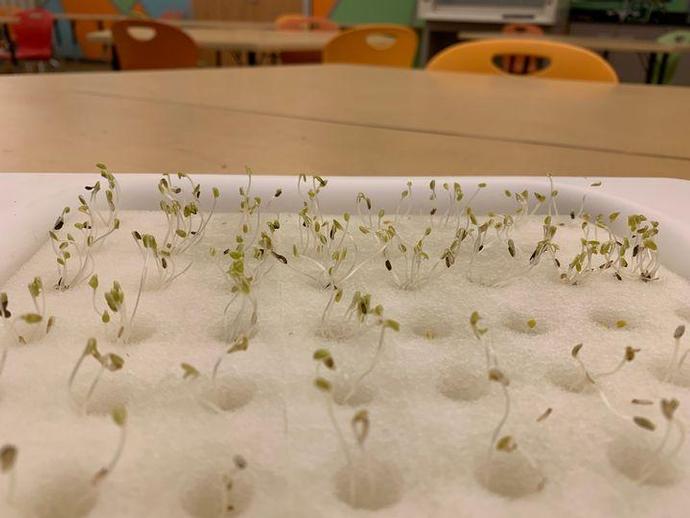
No soil, no problem!
November 22, 2021
No soil, no problem! Just 5 days ago during the museum's Homeschool Science & Engineering Academy, students planted a variety of seeds, such as lettuce mix and basil, using the museum's new HYVE LF-ONE hydroponic growth system. Today, we have sprouts! The museum's hydroponic growth system allows users to grow plants indoors year-round without the need for soil. Because soil is not used, the system requires significantly less water to grow plants. While the system is currently being used by our homeschool students, it will be available for on-site programs with interested school groups in the near future! #WhatWillYouDiscover?
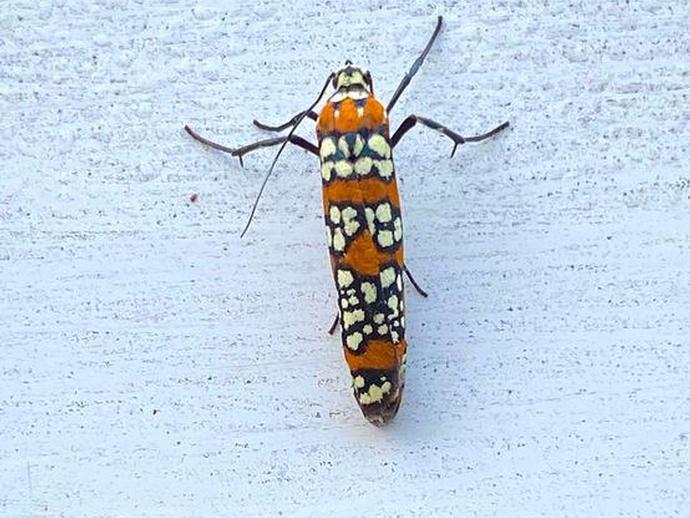
Ben here with the Monday edition of #BenInNature presented by our friends at Carter Bank & Trust!
November 22, 2021
Ben here with the Monday edition of #BenInNature presented by our friends at Carter Bank & Trust! The ailanthus webworm moth (Atteva aurea) has long been one of my favorites for its wild coloration! These little moths are said to resemble beetles or true bugs when at rest and resemble wasps while in flight. While they're now a common sight in Virginia, that wasn't always the case; prior to the 1850s, you wouldn't have seen these moths outside of south Florida and the American tropics. So what changed? Back in the day, the larvae of these moths fed on two trees: Simarouba glauca and Simarouba amara, both of which are found in Florida and/or parts farther south. In the late 1700s, another tree -- Ailanthus altissima, ...
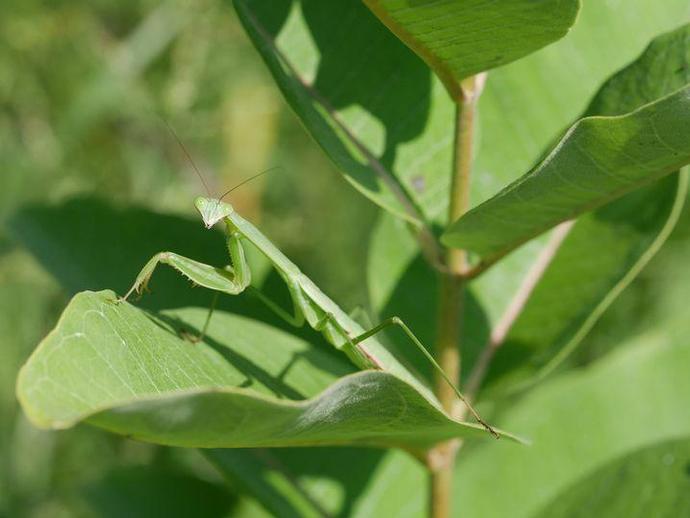
We're reaching into the archives for today's #BenInNature update presented by our friends at ...
November 21, 2021
We're reaching into the archives for today's #BenInNature update presented by our friends at Carter Bank & Trust! The following post was originally published on August 30, 2020. The Chinese mantis (Tenodera sinensis) is the largest mantis in North America, and they can be either brown or green in color. As the name suggests, these mantises are not native to the U.S.; their native range includes China, Japan, the Koreas, Micronesia, and Thailand. These critters were first introduced into the U.S. in the late 1800s when they were accidentally released at a plant nursery near Philadelphia. Since then, their spread has continued unabated and many nurseries still sell Chinese mantis egg cases (or "ootheca") for people to ...
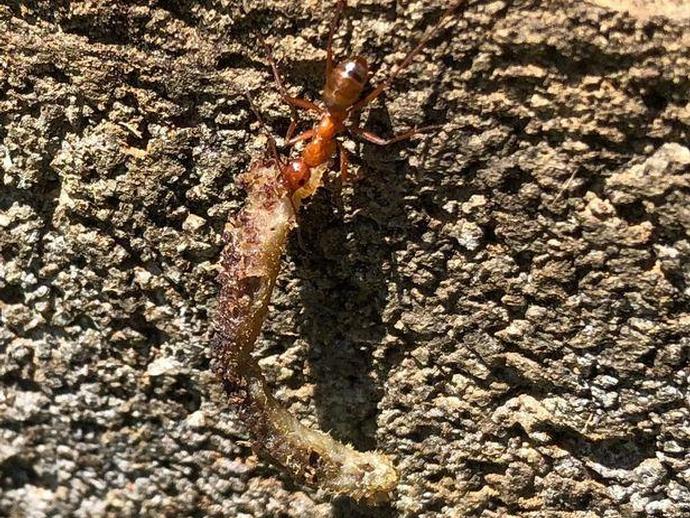
We're reaching into the archives for today's #BenInNature update presented by our friends at ...
November 20, 2021
We're reaching into the archives for today's #BenInNature update presented by our friends at Carter Bank & Trust! The following post was originally published on August 29, 2020. Not too long ago, I spotted this ant from the Formica pallidefulva group carrying this dried-up piece of earthworm up a wall. It got me wondering: just how much weight can an ant carry? As it turns out, about six years ago, a group of engineers at Ohio State University came up with a wonderfully weird method of testing that exact question. They decided to determine just how much weight an ant's neck joint could withstand. The way they did this was by taking a bunch of ants, anesthetizing them, and then gluing their heads to a small centrifuge. ...
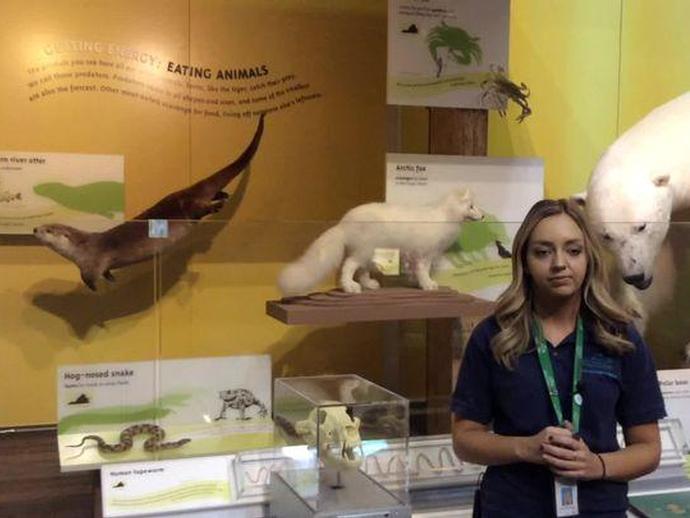
VMNH Educator Terri Robertson is back with another episode of "Museum Minute"!
November 18, 2021
VMNH Educator Terri Robertson is back with another episode of "Museum Minute"! This week, Terri highlights an otterly amazing specimen found inside the Lee and George W. Lester, II How Nature Works gallery! ABOUT MUSEUM MINUTE The Virginia Museum of Natural History has a spectacular assortment of displays within its exhibit galleries! Some displays are unforgettable, while others don't always get the attention they deserve. Through the original series "Museum Minute", museum educators highlight various displays throughout the exhibit galleries, while providing intriguing facts you may not have known. "Museum Minute" is made possible thanks to VMNH Corporate Partners Carter Bank & Trust (www.cbtcares.com) and Boxley ...
Armadillos have been steadily moving northward and expanding their range into North Carolina and ...
November 18, 2021
Armadillos have been steadily moving northward and expanding their range into North Carolina and Virginia.
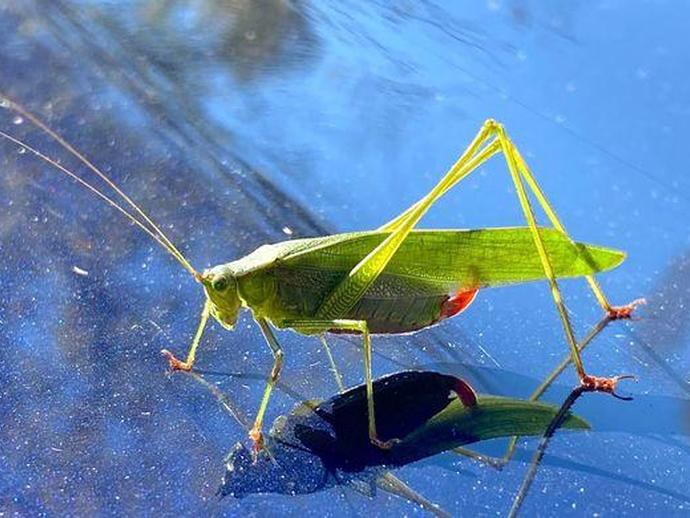
Ben here with the Thursday edition of #BenInNature presented by our friends at Carter Bank & ...
November 18, 2021
Ben here with the Thursday edition of #BenInNature presented by our friends at Carter Bank & Trust! This is the fork-tailed bush katydid Scudderia furcata, and I expect it's the last katydid I'll see in 2021. I spotted this lady on Oct. 24, which was already pretty late in the season for katydids (at least here in southwest Virginia). I've done a few posts about different katydids I've found -- as Marge Simpson once said in regard to potatoes, "I just think they're neat" -- but I don't know that I've talked about katydids as a whole. They belong to the family Tettigoniidae, and there are more than 6,400 species of katydid worldwide! You can find katydids on every continent except Antarctica. Katydids belong to the ...
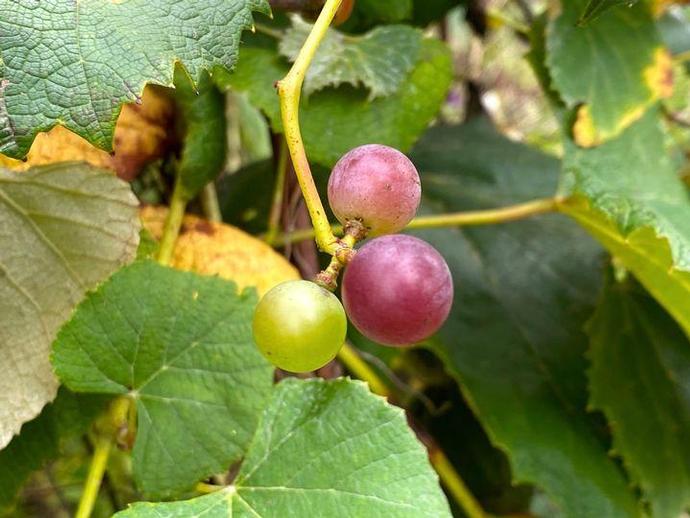
Ben here with today's edition of #BenInNature presented by our friends at Carter Bank & Trust!
November 17, 2021
Ben here with today's edition of #BenInNature presented by our friends at Carter Bank & Trust! When I was a kid, my grandpa used to grow fox grapes (Vitis labrusca) just like these! Fox grapes are the native grape species you're most likely to find growing wild here in Virginia, and they're also the species that provided the source for many popular grape cultivars; if you've ever enjoyed a Concord grape, you have fox grapes to thank! Despite the name, fox grapes aren't a particular favorite of foxes; one of the definitions of the word "foxy" is "having a sharp, brisk flavor," and so fox grapes are named for the unique earthy sweetness of these grapes. This quality of the grapes is caused by an aroma compound called ...

Please note that the museum will be CLOSED Wednesday ...
November 17, 2021
Please note that the museum will be CLOSED Wednesday, November 24 and Thursday, November 25 for the Thanksgiving holiday. ����

Featuring Guest Speaker: Brian T
November 16, 2021
Featuring Guest Speaker: Brian T. Watson, State Malacologist, Virginia Department of Wildlife Resources
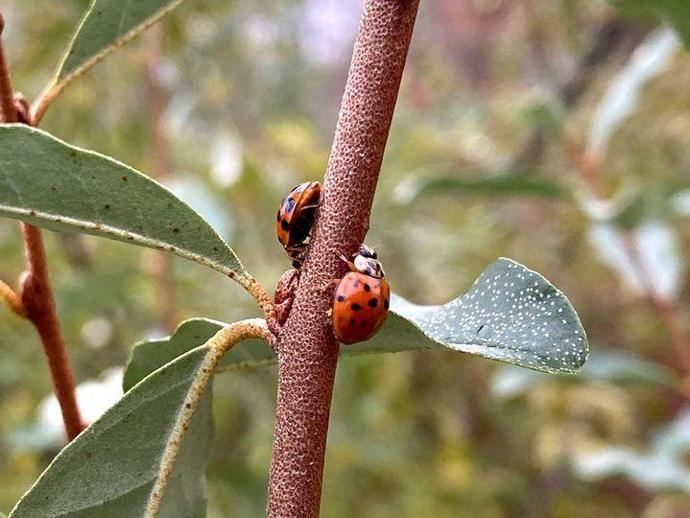
Ben here with today's edition of #BenInNature presented by our friends at Carter Bank & Trust!
November 16, 2021
Ben here with today's edition of #BenInNature presented by our friends at Carter Bank & Trust! These little guys are Asian multicolored ladybeetles (Harmonia axyridis), and there's a whole lot of questionable information floating around about them right now. For example, I found one headline that read, "These biting beetles that look like ladybugs are swarming NJ." That headline makes it sound as though these insects love to bite people, are not actually ladybugs, and have suddenly appeared out of nowhere, all of which is a half-truth at best. While Asian ladybeetles can be a nuisance, they aren't anything to worry about (except from an ecological standpoint, but we'll get to that shortly). First off, can they bite ...

BLACK FRIDAY SALE at the Museum Store!
November 15, 2021
BLACK FRIDAY SALE at the Museum Store!!! Enjoy 10% OFF all Museum Store merchandise on Friday, November 26 from 10am to 4pm!** VMNH Members who present their membership ID during purchase will receive an additional 10% off! The Museum Store features a wide variety of unique clothes, games, toys, and novelty items for children and adults! **Sale does not apply to consignment items. Museum admission is not required to shop at the Museum Store.
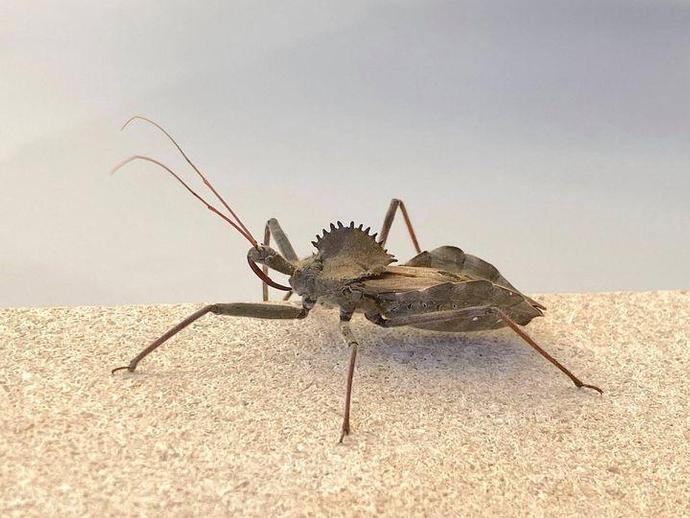
Ben here with the Monday edition of #BenInNature presented by our friends at Carter Bank & Trust!
November 15, 2021
Ben here with the Monday edition of #BenInNature presented by our friends at Carter Bank & Trust! Every autumn, I can expect to get a couple of emails from folks who have found wheel bugs (Arilus cristatus) in their gardens, and they always ask the same basic question: What on Earth is this weird thing?!? With its large size and spiky mohawk, the wheel bug is one of the most unusual and eye-catching insects we have in Virginia! Wheel bugs are a large species of assassin bug (family Reduviidae), and they're among the apex predators of the insect world. Measuring up to 1.5 inches long, they're one of the largest terrestrial true bugs in North America! If you keep a garden, you should celebrate finding wheel bugs near your ...
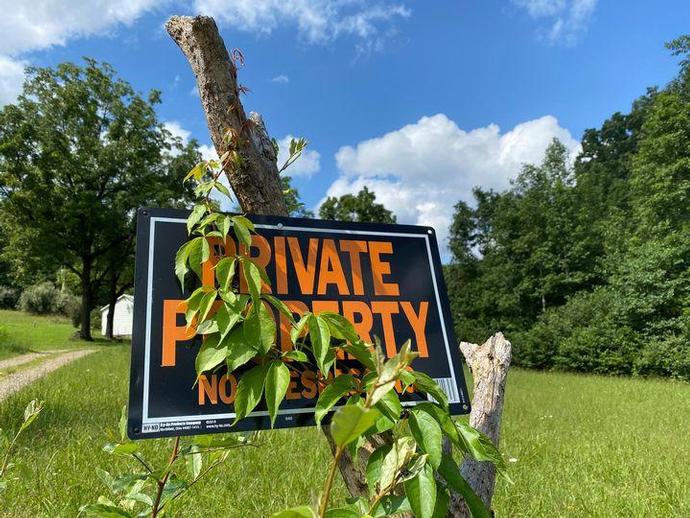
We're reaching into the archives for today's #BenInNature update presented by our friends at ...
November 14, 2021
We're reaching into the archives for today's #BenInNature update presented by our friends at Carter Bank & Trust! The following post was originally published on August 28, 2020. Virginia creeper is more than just my college nickname; it's also a climbing vine! Also known as five-leaved ivy and Victoria creeper, Virginia creeper (Parthenocissus quinquefolia) is a member of the grape family Vitaceae and can be found across eastern and central North America, from Canada all the way down to Guatemala! This vine is an accomplished climber and can reach heights of as much as 100 feet (and it sometimes seems like it can reach those heights in a matter of hours). It climbs its way up even smooth surfaces using small tendrils ...
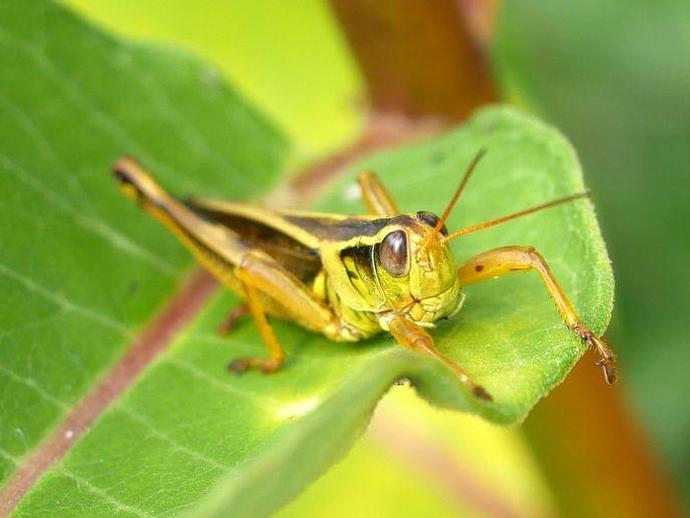
We're reaching into the archives for today's #BenInNature update presented by our friends at ...
November 13, 2021
We're reaching into the archives for today's #BenInNature update presented by our friends at Carter Bank & Trust! The following post was originally published on August 27, 2020. The red-legged grasshopper (Melanoplus femurrubrum) is one of our most common grasshoppers, and it can be found in the U.S., Mexico, and Canada. However, depending on where you find it, it might be a different size! The farther north you go, the smaller the adult red-legged grasshoppers. This is because colder regions have shorter growing seasons, meaning that these grasshoppers need to grow up fast. The adults up north hit maturity at a smaller size so that they can more quickly reach their reproductive stage before the season ends! These ...
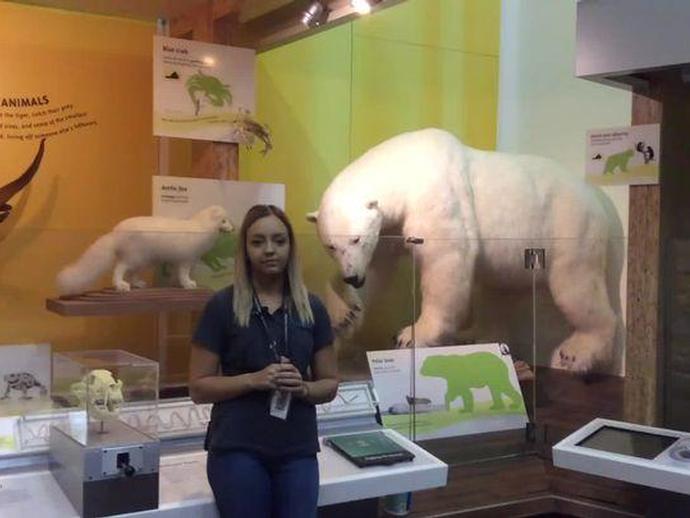
We're reaching into the archives for this week's "Museum Minute" because it's always a good time ...
November 12, 2021
We're reaching into the archives for this week's "Museum Minute" because it's always a good time to talk about polar bears! This episode was originally posted on April 16, 2021. ABOUT MUSEUM MINUTE The Virginia Museum of Natural History has a spectacular assortment of displays within its exhibit galleries! Some displays are unforgettable, while others don't always get the attention they deserve. Through the original series "Museum Minute", museum educators highlight various displays throughout the exhibit galleries, while providing intriguing facts you may not have known. "Museum Minute" is made possible thanks to VMNH Corporate Partners Carter Bank & Trust (www.cbtcares.com) and Boxley Materials Company (www.boxley.com).
Don't miss the next edition of "Science Talks" on Tuesday, November 16 at 7 p
November 12, 2021
Don't miss the next edition of "Science Talks" on Tuesday, November 16 at 7 p.m., when Brian T. Watson, State Malacologist with the Virginia Department of Wildlife Resources presents "Freshwater Mussel Restoration in Virginia and the South River Watershed" live at the Historic Wayne Theatre in Waynesboro, Virginia! The event is free to attend and will also be streamed live on the museum's Facebook page!
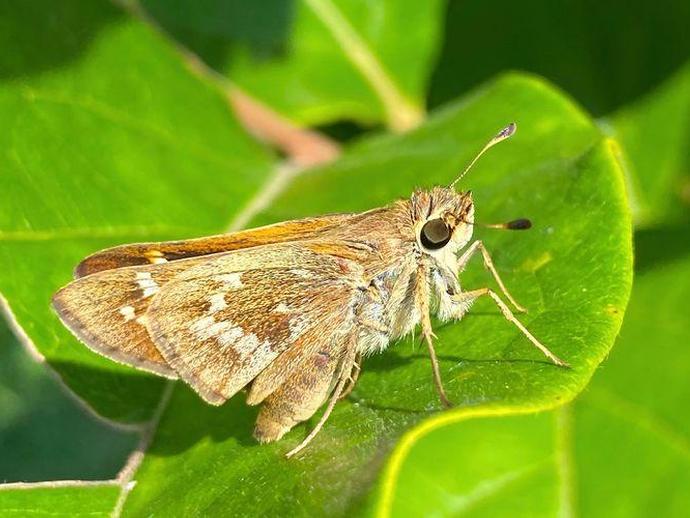
Ben here with the Friday edition of #BenInNature presented by our friends at Carter Bank & Trust!
November 12, 2021
Ben here with the Friday edition of #BenInNature presented by our friends at Carter Bank & Trust! This little guy is a type of grass skipper butterfly called a "sachem" (Atalopedes campestris). Grass skippers belong to the subfamily Hesperiinae, and they're easy to spot because of the distinct way they hold their wings while at rest. The wings are held partially open with the forewings and hindwings held at different angles, which is often called the "jet-plane position." The sachem can be found year-round in the extreme southern parts of the U.S., Mexico and Central America, along with the upper half of South America. Their range is rapidly spreading northward due solely to climate change, however, and in the summer of ...
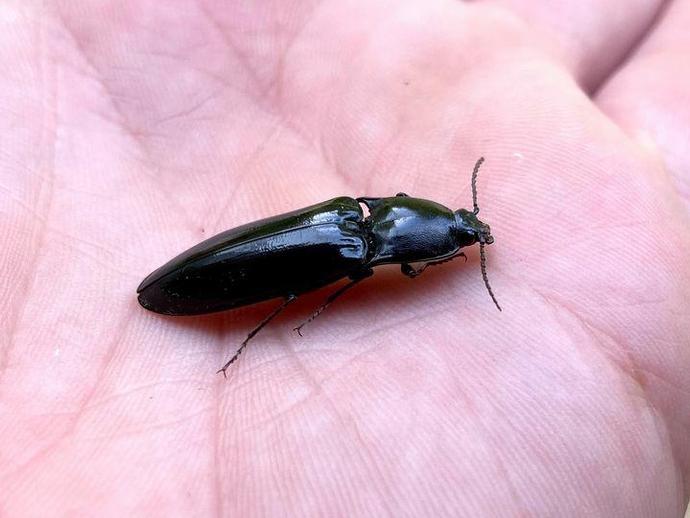
We're reaching into the archives for today's #BenInNature update presented by our friends at ...
November 11, 2021
We're reaching into the archives for today's #BenInNature update presented by our friends at Carter Bank & Trust! The following post was originally published on August 26, 2020. This is Melanactes piceus, a click beetle that looks like it just left a shoeshine stand! Click beetles belong to the family Elateridae, which contains more than 900 species just in North America and more than 9,300 species worldwide! This is a larger click beetle, as most species are fairly small and are usually a drab brown or black color. A few species of click beetles are large and colorful, and some are even bioluminescent! The most impressive click beetle you're likely to find in southwest Virginia is Alaus oculatus, commonly called the ...
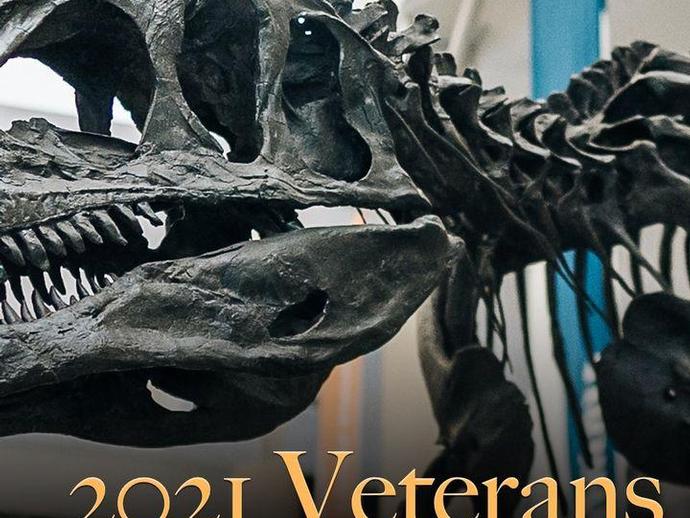
FREE ADMISSION this Veterans Day for active and retired U
November 10, 2021
FREE ADMISSION this Veterans Day for active and retired U.S. military personnel!!
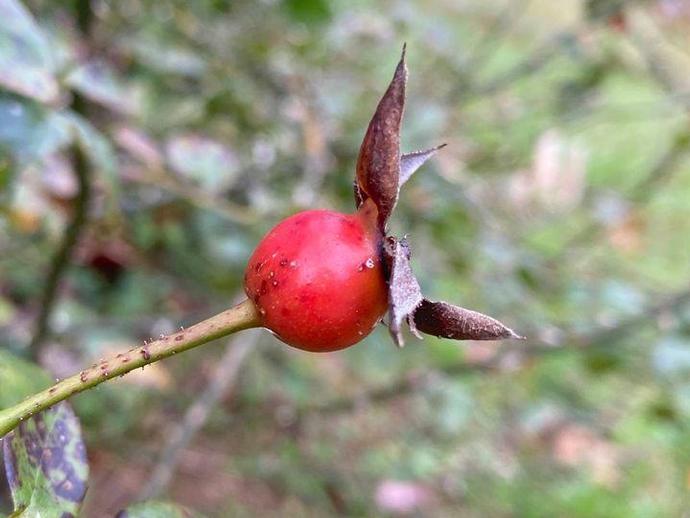
Ben here with another edition of #BenInNature presented by our friends at Carter Bank & Trust!
November 10, 2021
Ben here with another edition of #BenInNature presented by our friends at Carter Bank & Trust! The blooms may have fallen away from your rose bush (genus Rosa), but if the flowers were successfully pollinated, you'll be left with rose hips! Rose hips are "accessory fruits" of rose plants, which means that they're a type of fruit that doesn't exclusively form from the floral ovary, but rather from some other part of the flower. Apples, figs, pears, and strawberries are also accessory fruits. Rose hips begin forming in spring or early summer but don't ripen until later in the summer through fall. They're used to make all kinds of different treats, including jam, jelly, wine, tea, bread, and pie. They can apparently be ...
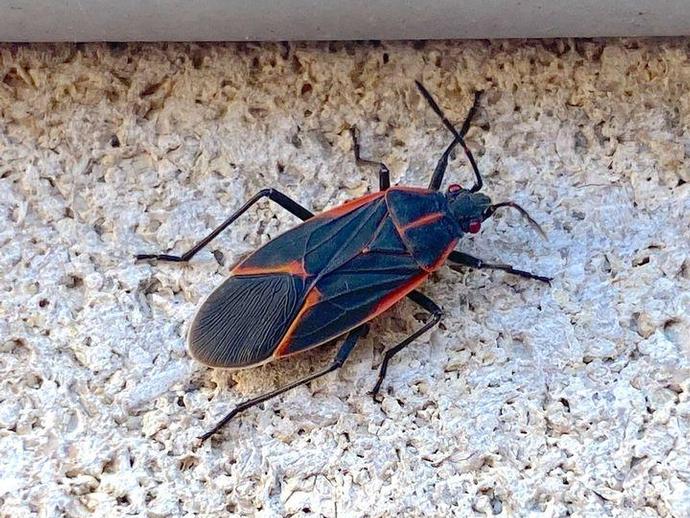
Ben here with today's edition of #BenInNature presented by our friends at Carter Bank & Trust!
November 9, 2021
Ben here with today's edition of #BenInNature presented by our friends at Carter Bank & Trust! This is the boxelder bug (Boisea trivittata), and if you recognize it, there's a good chance that you're not a big fan. While boxelder bugs are harmless to humans, they can easily become pest insects, particularly in the fall. As the name suggests, boxelder bugs primarily feed on the developing seeds of boxelder trees, although they'll also feed on maple and ash seeds. In the fall they will also feed on fruit, which can cause dimples and scars. If disturbed, they'll release a foul-smelling, terrible-tasting compound to deter predators. Their black and red coloration is a form of aposematism, which warns predators that boxelder ...

FREE ADMISSION on Veterans Day for active and retired military personnel!
November 8, 2021
FREE ADMISSION on Veterans Day for active and retired military personnel!
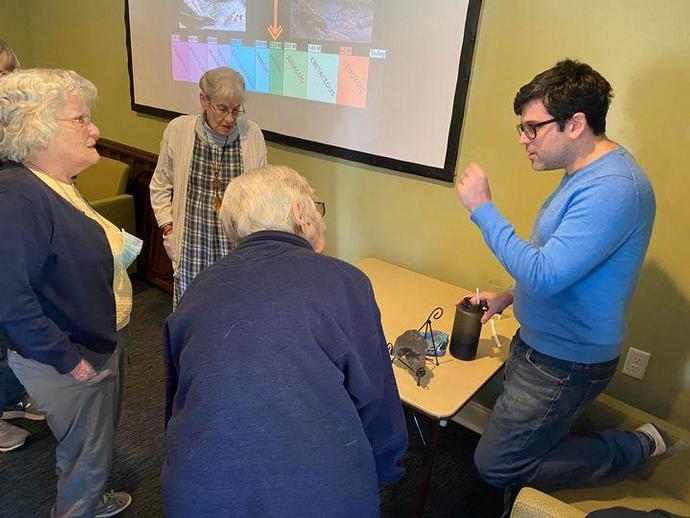
VMNH Assistant Curator of Paleontology Dr
November 8, 2021
VMNH Assistant Curator of Paleontology Dr. Adam Pritchard visited the King's Grant Retirement Community in Henry County on Monday to offer a presentation on the rise of reptiles in ancient Virginia. The enthusiastic audience had plenty of questions for Dr. Pritchard, and one resident even brought along an unusual item to be identified!
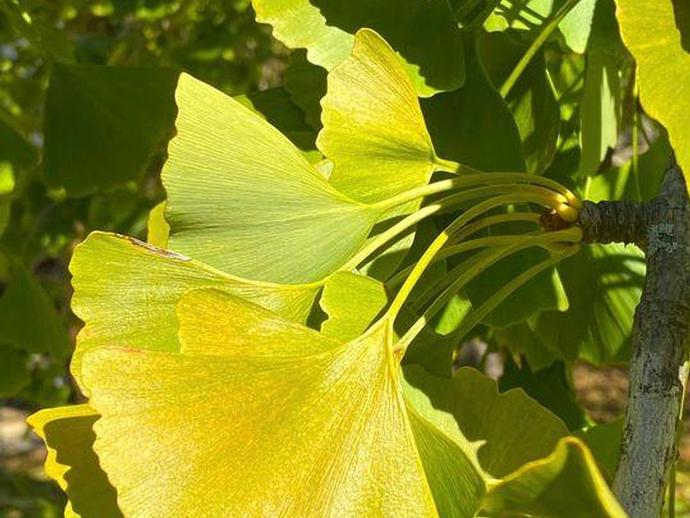
Ben here with the Monday edition of #BenInNature presented by our friends at Carter Bank & Trust!
November 8, 2021
Ben here with the Monday edition of #BenInNature presented by our friends at Carter Bank & Trust! This is Ginkgo biloba, commonly known as the ginkgo tree, and there's nothing else quite like it! Ginkgo is easy to identify because it's the only seed plant with fan-shaped leaves that have veins radiating out into the leaf blade. It's the last living species within the order Ginkgoales, and the first examples of the genus Ginkgo appeared during the Middle Jurassic period! As flowering plants began to appear, all of the other members of the order began to disappear, and by the end of the Pliocene, only Ginkgo biloba remained. This makes the ginkgo tree a famous example of a so-called "living fossils!" Ginkgo was once very ...
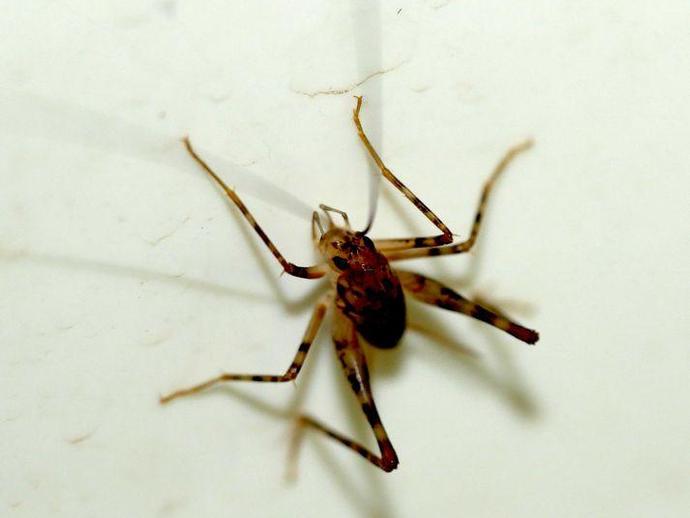
We're reaching into the archives for today's #BenInNature update presented by our friends at ...
November 7, 2021
We're reaching into the archives for today's #BenInNature update presented by our friends at Carter Bank & Trust! The following post was originally published on August 25, 2020. When it comes to unloved insects, camel crickets probably rank somewhere between cockroaches and brown marmorated stink bugs. With their long limbs, twitching antennae, and tendency to erratically jump all over the place, it's not hard to see why people don't like these guys in their homes. Camel crickets belong to the cave cricket family Rhaphidophoridae, and this particular camel cricket is from the genus Ceuthophilus. They get their common name from their humped back; they definitely don't share any of the camel's other defining features, as ...
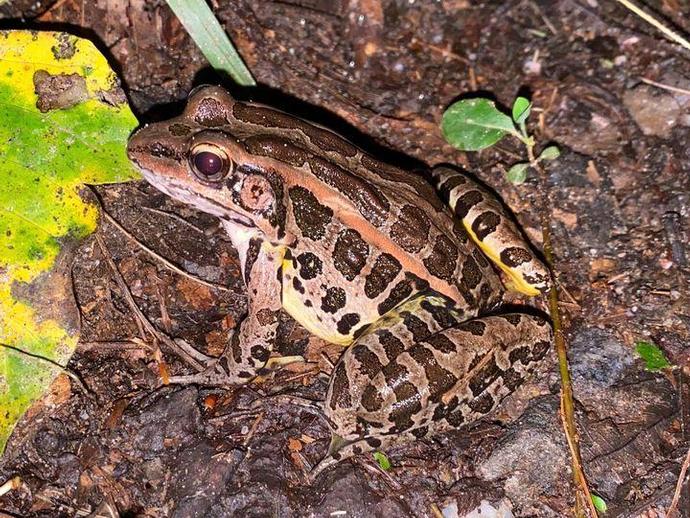
We're reaching into the archives for today's #BenInNature update presented by our friends at ...
November 6, 2021
We're reaching into the archives for today's #BenInNature update presented by our friends at Carter Bank & Trust! The following post was originally published on August 24, 2020. I was heading up my driveway Friday night when this fellow decided it was crucially important to hop in front of my car. Fortunately, I hit the brakes in time and was able to snap a photo of one of Virginia's coolest frogs: the pickerel frog (Lithobates palustris). What makes the pickerel frog truly unique is its defense mechanism: this is the only poisonous frog native to the United States! When pickerel frogs feel threatened, they emit skin secretions that are toxic to most predators (although bullfrogs and a handful of species of snakes can ...
An armadillo has been photographed waddling through Wise County (Virginia); the latest in a ...
November 6, 2021
An armadillo has been photographed waddling through Wise County (Virginia); the latest in a series of sightings as the species pushes north.
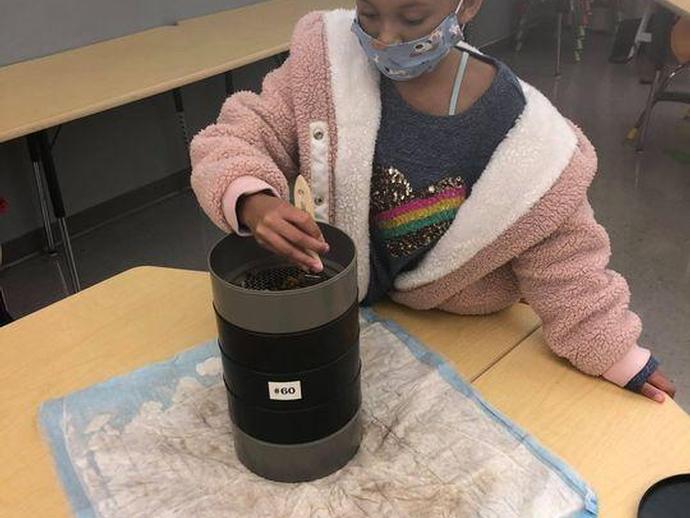
Geology took center stage during this week's Homeschool Science & Engineering session ...
November 5, 2021
Geology took center stage during this week's Homeschool Science & Engineering session, as students explored lessons in everything from soil composition to plate tectonics through a variety of hands-on learning activities! The museum's Homeschool Science & Engineering Academy is a series of engaging science and engineering themed programs for homeschool students ages 6 to 18. The programs take place on the 1st and 3rd Wednesday of each month from September through May. REGISTRATION IS OPEN! Registration is currently open for for future programs, but spaces fill-up fast. To participate, pre-registration is required 10 days prior to each program. The program fee is $7 per student. Online registration is available at www. ...
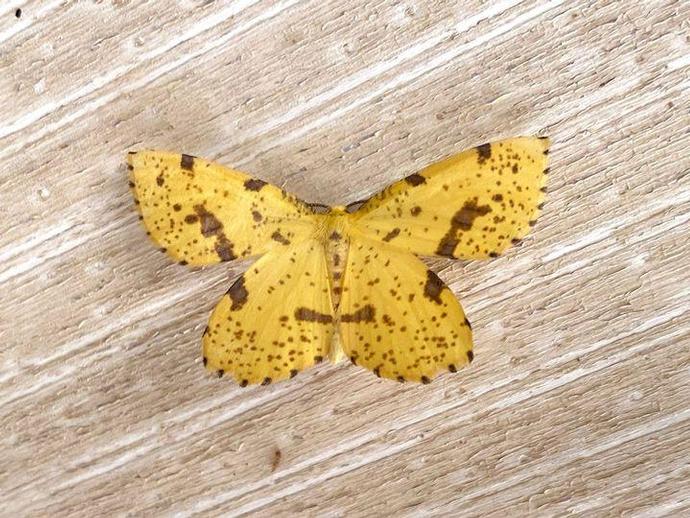
Ben here with the Friday edition of #BenInNature presented by our friends at Carter Bank & Trust!
November 5, 2021
Ben here with the Friday edition of #BenInNature presented by our friends at Carter Bank & Trust! This attractive little moth is most likely the false crocus geometer moth (Xanthotype urticaria), although it's difficult to know for certain! There are five different species in the genus Xanthotype, all of them found in North America. All five of the species vary wildly when it comes to their markings, and there's apparently no reliable way to tell them apart without examining their reproductive organs (which is a step further than I am willing to take my relationship with moths). However, of the five species, X. urticaria is the only one that's found throughout Virginia, so that's most likely the species this individual ...
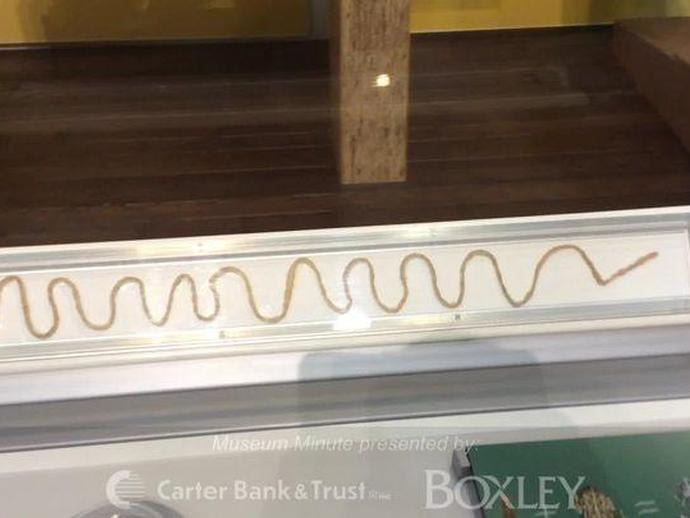
Science is often more interesting than it is pretty!
November 5, 2021
Science is often more interesting than it is pretty! VMNH Education Manager Christy Deatherage is inside the Lee and George W. Lester, II How Nature Works gallery this week to highlight the exhibit's tapeworm model display in this week's episode of "Museum Minute"! ABOUT MUSEUM MINUTE The Virginia Museum of Natural History has a spectacular assortment of displays within its exhibit galleries! Some displays are unforgettable, while others don't always get the attention they deserve. Through the original series "Museum Minute", museum educators highlight various displays throughout the exhibit galleries, while providing intriguing facts you may not have known. "Museum Minute" is made possible thanks to VMNH Corporate ...
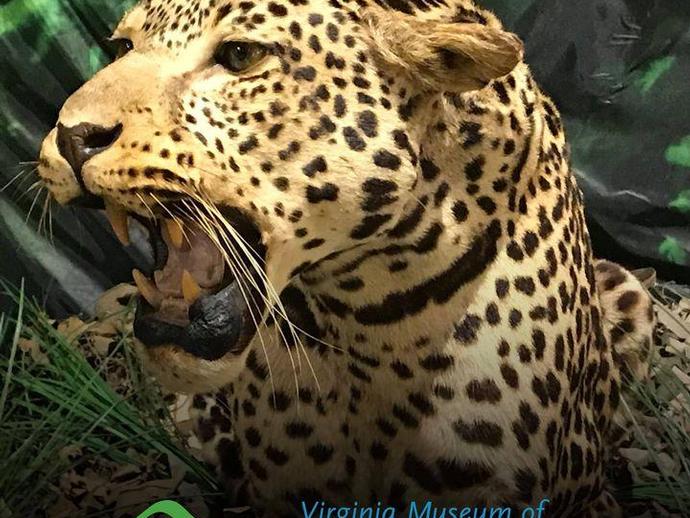
Tomorrow may be the last day to check-out the special exhibit "Wild About Cats", but don't fret!
November 4, 2021
Tomorrow may be the last day to check-out the special exhibit "Wild About Cats", but don't fret! Museum staff are hard at work preparing the next special exhibit, "Science of Flight", which will debut Saturday, January 22, 2022 with a day-long opening day celebration...more details to follow! Oh, and if you love cats, the museum's Lee & George W. Lester, II How Nature Works exhibit gallery will continue to feature a variety of magnificent cat displays year-round!
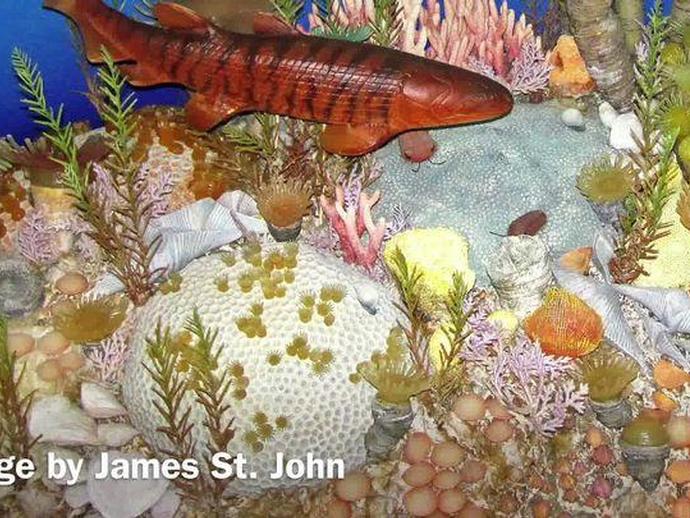
Did you know that over 350 million years ago much of the western half of what we now know as ...
November 4, 2021
Did you know that over 350 million years ago much of the western half of what we now know as Virginia was completely covered by ocean water? VMNH Assistant Curator of Paleontology Dr. Adam Pritchard knows this and so did Bothriolepis, an armored fish that was incredibly successful during the Devonian period and the focus of this week's episode of "Tales of Ancient Life"! Special thanks to Carter Bank & Trust (www.cbtcares.com) and Boxley Materials Company (www.boxley.com) for helping make this episode possible! ABOUT TALES OF ANCIENT LIFE Our planet has an incredible story to tell and VMNH Assistant Curator of Paleontology Dr. Adam Pritchard helps share it through his original video series, "Tales of Ancient Life". Dr. ...
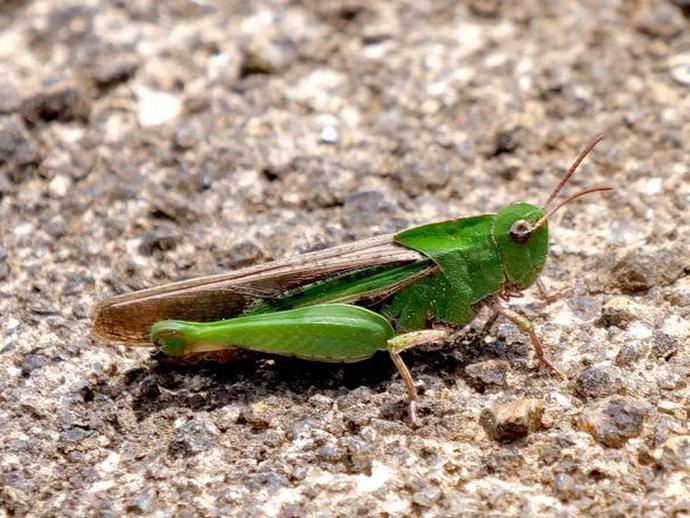
It's time for another edition of #BenInNature presented by our friends at Carter Bank & Trust!
November 4, 2021
It's time for another edition of #BenInNature presented by our friends at Carter Bank & Trust! Here's a photo I took over the summer: a green-striped grasshopper (Chortophaga viridifasciata)! This grasshopper is a fairly common species and can be found in North America and Central America. It usually inhabits moist, grassy areas, particularly hay meadows and roadsides. What makes this species unique is that it's one of the first grasshopper species you're likely to see in the spring, at least here in Virginia. A couple of weeks ago we looked at the American bird grasshopper (Schistocerca americana), the largest grasshopper in Virginia, which is one of the very few grasshoppers that overwinters as an adult -- as a ...
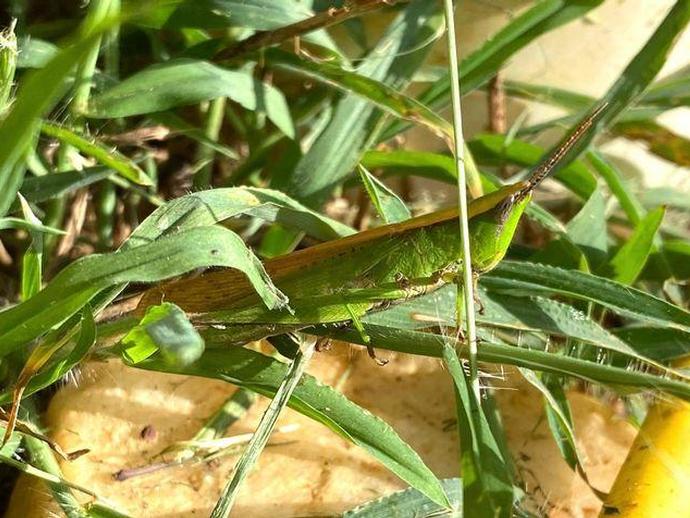
Ben here with today's edition of #BenInNature presented by our friends at Carter Bank & Trust!
November 3, 2021
Ben here with today's edition of #BenInNature presented by our friends at Carter Bank & Trust! Like most grasshoppers, the clipped-wing grasshopper (Metaleptea brevicornis) is a master of disguise! This species is found in wetlands across eastern North America, and it's usually spotted from July-October. I photographed this one back in September. The most unusual feature of this grasshopper is that it "crepitates" while flying, which means it makes a clicking noise when it's on the wing. If you're in Virginia and hear a grasshopper clicking as it flies past, it's probably one of these guys! Also, you're much more likely to see it flying than jumping; these grasshoppers don't leap as much as other species do. ...
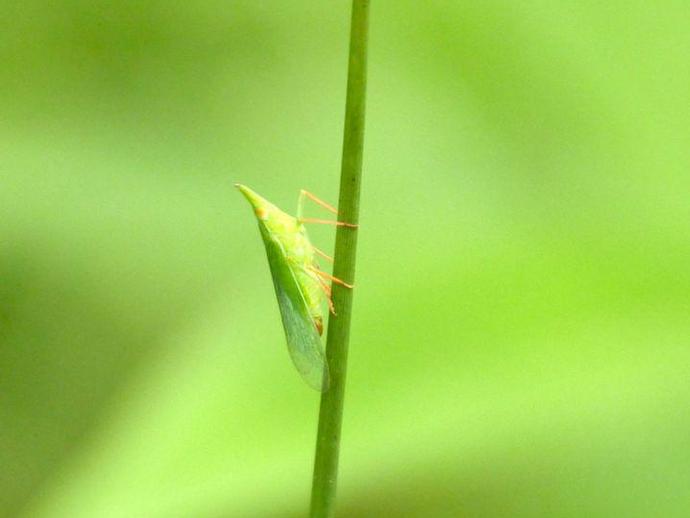
We're reaching into the archives for today's #BenInNature update presented by our friends at ...
November 2, 2021
We're reaching into the archives for today's #BenInNature update presented by our friends at Carter Bank & Trust! The following post was originally published on August 23, 2020. This unusual-looking little critter is Rhyncomitra microrhina, which is a planthopper in the family Dictyopharidae. There are more than 12,500 different described species of plant hoppers worldwide, and their common name comes from two traits: their striking resemblance to plant structures and their tendency to make short hops to get around. However, they often just walk around slowly so they don't draw attention from predators. One of the main reasons I wanted to share this insect is because when I first saw it, I had no idea what it was. I ...
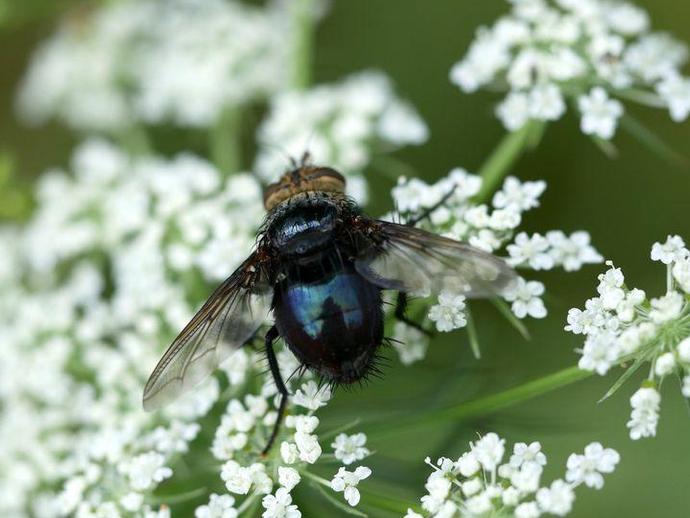
We're reaching into the archives for today's #BenInNature update presented by our friends at ...
November 1, 2021
We're reaching into the archives for today's #BenInNature update presented by our friends at Carter Bank & Trust! The following post was originally published on August 22, 2020. When we think of flies, we usually think of them as being drawn to garbage and other gross stuff. However, there is an enormous amount of variety among flies, and they have evolved all kinds of unique ways to survive and reproduce. This particular fly belongs to the genus Archytas, named after the classical Greek philosopher and mathematician of the same name. Flies within this genus belong to the tribe Tachinini, which falls within the Tachinidae family of flies. There are more than 1,300 species within this family just in North America, and ...
Archives
2026
2025
2024
2023
2022
2021
2020
2019
2018
2017
2016
2015
2014
2013
2012
2011
2010
2009
2008

Please Visit Us Soon
Hours:
Tuesday - Saturday: 10am - 4pm
Sunday: Noon to 4pm (Memorial Day Weekend through Labor Day Weekend only)
Monday: Closed
Admission:
$12 for ages 18-59
$6 for ages 3-17, seniors 60+, and college students
FREE for children under 3, museum members, members of ASTC Passport participating institutions, and EBT cardholders
My 4 year old son loves going to the museum. The exhibits are educational, interactive and kid-friendly.
”

 Hours & Admissions
Hours & Admissions Directions
Directions